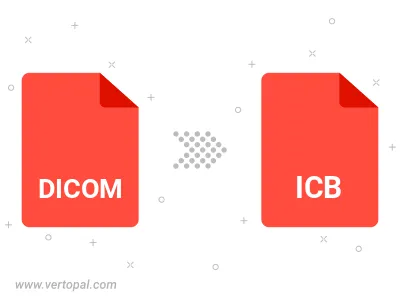Convert DICOM to ICB
Convert DICOM images to ICB format, edit and optimize images online and free.

DICOM, or Digital Imaging and Communications in Medicine, is a standardized file format used in the field of medical imaging. It facilitates the storage, exchange, and transmission of medical images and related information between devices from different manufacturers, ensuring interoperability in healthcare environments. Originating from efforts by the National Electrical Manufacturers Association (NEMA) and the American College of Radiology (ACR) in the 1980s, DICOM's evolution has played a crucial role in the development of advanced medical imaging technologies and systems.
The ICB file extension, associated with Targa Graphics, stands for Image Capture Board. It was originally used with the AT&T EPICenter Image Capture Board video card and software like ICB-PAINT and TARGA-PAINT. This format is a raster graphics file used for storing and exchanging deep-pixel images, supporting 8, 16, 24, and 32 bits per pixel. Developed by Truevision Inc., it played a significant role in early computer graphics for high-color display on IBM-compatible PCs.
Click the Choose File button to select the DICOM file.
Check the file preview quickly and use DICOM to ICB tools if you need to change the conversion settings.
Once the convert is complete, you can download the final ICB file.

To change DICOM format to ICB, upload your DICOM file to proceed to the preview page. Use any available tools if you want to edit and manipulate your DICOM file. Click on the convert button and wait for the convert to complete. Download the converted ICB file afterward.
Follow steps below if you have installed Vertopal CLI on your macOS system.
cd to DICOM file location or include path to your input file.Follow steps below if you have installed Vertopal CLI on your Windows system.
cd to DICOM file location or include path to your input file.Follow steps below if you have installed Vertopal CLI on your Linux system.
cd to DICOM file location or include path to your input file.